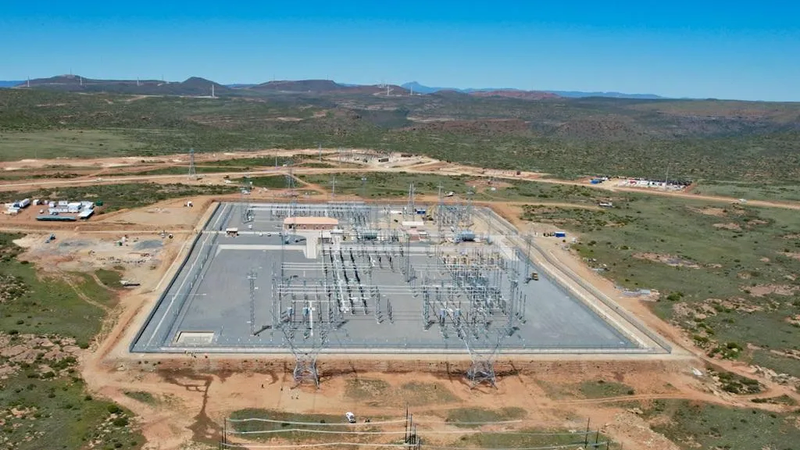
In a significant move towards transforming its energy sector, South Africa has officially energised its first Independent Power Producer (IPP)-built main transmission substation. This milestone, a part of the country’s broader efforts to diversify its power generation and integrate renewable energy sources into the national grid, marks a step forward in modernising the nation’s energy infrastructure.
The substation, located in the Western Cape, is the first of its kind in South Africa, built and operated by an IPP rather than a state-owned entity like Eskom, the country’s traditional utility. The new infrastructure will play a crucial role in the delivery of electricity generated from renewable sources, particularly wind and solar power, to the national grid. By doing so, it supports South Africa’s goal of reducing its carbon footprint and moving towards a more sustainable energy future.
Independent Power Producers (IPPs) have become a central feature of South Africa’s energy landscape in recent years. The country, facing significant energy challenges, including power shortages and an aging fleet of coal-fired power stations, has embraced IPPs as a way to diversify its electricity generation capacity. IPPs typically bring innovation, efficiency, and much-needed investment into the sector.
In 2021, South Africa’s Renewable Energy Independent Power Producer Procurement Programme (REIPPPP) saw a major expansion, attracting billions of rands in investment for renewable energy projects. Through these IPPs, a growing proportion of South Africa’s energy is being sourced from wind, solar, and, in the future, even green hydrogen.
This new substation will be the backbone of the increased renewable capacity being added to the grid. The infrastructure supports the smooth transmission of electricity from renewable power plants to substations that are connected to the national grid. Given the variability of renewable sources like wind and solar, modernizing the transmission system is critical to ensure a stable and reliable supply of energy.
The energisation of the new substation represents not just a victory for renewable energy but also an important step in grid modernization. South Africa’s transmission network has been struggling to keep up with the pace of new generation capacity being added to the system. Older substations, often designed with fossil fuel power plants in mind, were not designed to handle the intermittent and variable nature of renewable energy.
To address this, the government has embarked on a series of upgrades to its grid infrastructure. This includes the construction of new substations and the addition of new technologies to improve grid stability and efficiency. The IPP-built substation is a prime example of how private sector investment can accelerate the modernization of the grid while promoting clean energy.
The economic and environmental benefits of the new substation are significant. On the economic front, the integration of renewable energy is expected to reduce electricity prices in the long run, as the cost of renewable energy continues to decline. The IPP model also attracts private investment, reducing the burden on the government and taxpayers.
Environmentally, the move aligns with South Africa’s commitments to reducing greenhouse gas emissions. Renewable energy sources like solar and wind are essential in achieving these goals, as they generate power without emitting carbon dioxide. The energisation of this substation makes it easier for South Africa to incorporate clean energy into its national grid, further reducing reliance on coal-fired power.
Additionally, the integration of renewable energy into the grid reduces South Africa’s dependence on imported energy and helps to diversify its energy mix. This diversification enhances the resilience of the country’s energy system and reduces its vulnerability to global energy market fluctuations.
With the successful energisation of the first IPP-built substation, South Africa has set the stage for further growth in renewable energy and grid expansion. More IPPs are expected to contribute to the country’s energy transformation, and the government is looking to fast-track the development of new renewable energy projects to meet its ambitious energy goals.
The Department of Mineral Resources and Energy (DMRE) has outlined plans to accelerate the procurement of renewable energy through the REIPPPP. Future initiatives are expected to focus on increasing renewable capacity, further enhancing grid stability, and ensuring that energy access is expanded across all regions of the country.
In conclusion, the energisation of South Africa’s first IPP-built main transmission substation is a landmark achievement that will help shape the future of the country’s energy sector. By embracing the IPP model and investing in modern grid infrastructure, South Africa is moving closer to a cleaner, more reliable, and more sustainable energy future. The combination of private sector investment, government support, and renewable energy innovation offers hope for a country that is striving to balance its energy needs with its environmental responsibilities.

